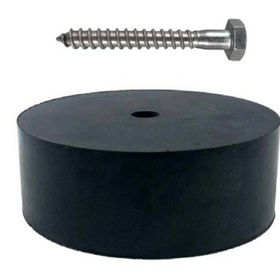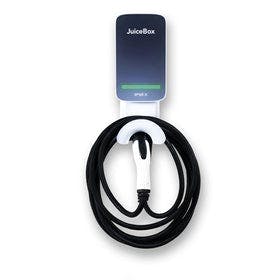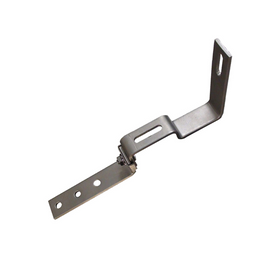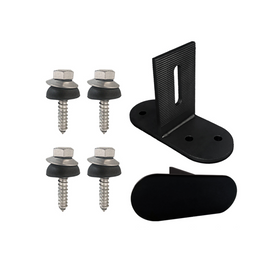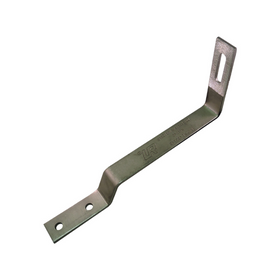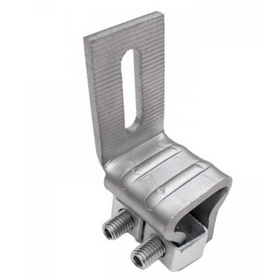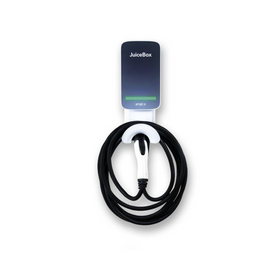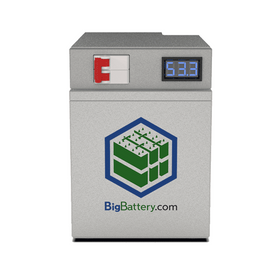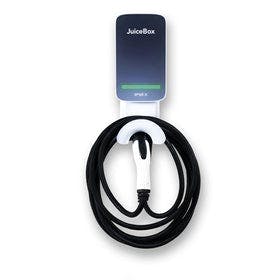
Carbon Zero Home Renovation: Planning and Financing
Last Updated: Feb 1, 2025I believe we can move millions of homes to zero carbon through the traditional mortgage process, such as using refinancing and home equity lines of credit.
Using the refinance of a 4-year-old mortgage, I was able to decrease my utility bills by $50 a month on average compared to an increase in my mortgage costs of $40 a month and added 3% value to my home. This increased value allowed me to borrow several thousand dollars to fully electrify, add solar, reduce water use and improve indoor air quality. Through the financing, which did not include any special incentives, I achieved GreenStar Homes Certification Platinum, Pearl Platinum, and a Home Energy Score of 10 out of 10.
While my project, of course, features what we need to do with green technology, the real goal was to show how we can pay for these things are right under our noses. And, in many cases, we do not need special financing, rebates, or tax credits to make it happen. As of this writing, home values are skyrocketing, and interest rates have bottomed out. This current state is making these projects even easier to do and get immediate ROI for. Lenders have the opportunity to create new programs and then work with realtors to help.
Table of Contents
- Why Did I Decide to Retrofit My Home to Net Zero?
- What Were the Initial Challenges of Financing a Net Zero Carbon Retrofit?
- How New Green Financing Programs Helped Us Proceed
- What Setbacks Did My Zero Carbon Retrofit Project Encounter?
- Getting Started on My Zero Carbon Renovation
- How Does a Green Appraisal Work?
- Having to Prioritize
- Reflections on Financing
- How Can Zero Carbon Retrofits Become Widespread?
- What Are the Steps to Get Started With Financing A Zero Carbon Renovation?

Why Did I Decide to Retrofit My Home to Net Zero?
Even before interest rates were low and home prices rose significantly, back in 2019, I was ready to start my project. I had been planning this for some time because I work in this industry and thought I should put my money where my mouth is. Unfortunately, it was derailed by a local water quality issue that I will discuss in a later article.
What Were the Initial Challenges of Financing a Net Zero Carbon Retrofit?
When we approached the first lender about this opportunity, we started going down the path of using a construction loan. It sounds a little intimidating, but all it is is taking two mortgages. One of them is the very short term to pay contractors immediately. It then gets paid off, and the traditional mortgage starts. However, we were required to hire someone with a builder's license to be involved in the project to use that type of loan. This step did not make sense for my project because the bulk of the work would need to be done by a licensed HVAC, electrical, plumber, and solar installer. I was planning to be the general contractor as I had done this already on a previous home project and did not need a builder. We tried to negotiate this by offering instead to have a certified Home Energy Rater (HERS) as getting the rating done to determine how much energy I would save and how much more I could borrow in my loan to do the work that was key to the project. This application was rejected as it did not match corporate banking policy, not an easy thing to change!

How New Green Financing Programs Helped Us Proceed
Around this same time, the Freddie Mac Green Choice Mortgage program was launching, and this gave lenders the ability to give out funds near construction loan levels. Still, instead of the builder license, it did require the certified energy rater and a green appraiser. Something much more necessary and relevant to my project. The idea is that as energy costs decrease, lenders should be more confident in giving out more money to fund more significant energy efficiency and renewable projects. The lendee has fewer utility bills and can then direct those funds to the mortgage. The total cost of homeownership perhaps remains unchanged or is lower. But you then have a more valuable home with newer systems. The green appraisal is critical because lenders cannot loan much above the value of a home due to lending laws. So a green appraiser, in theory, should recognize increased value for energy efficiency and solar power, thus giving more borrowing power to the lender to complete the project.
Still, taking on Freddie mac required a significant commitment from the bank, and they were not convinced there was a great demand for this in the market. So we moved on to work with the United Bank of Michigan. Despite the lack of clarity as to whether it would be in demand immediately, they decided to take on Freddie Mac Green Choice.
The next big challenge was that this required a pool of certified green appraisers, or at least that is the ideal goal to make the program work. We lucked out because the nation's leading green appraiser and trainer, Sandra Adomatis, planned to come to Lansing, Michigan (in 2019) to host a training for appraisers. With this timely training, United Bank got a few appraisers to go. So, we now have a larger pool of these certified appraisers in Michigan and could utilize one in our mortgage and fulfill the loan's requirement.
What Setbacks Did My Zero Carbon Retrofit Project Encounter?
As mentioned, I was ready to move forward under the Freddie Mac Green Choice Program until I hit a snag with water quality. After spending more than half a year researching rainwater catchments, I decided to use more traditional systems to fix my issue. By that time, I added a few more items to my green home improvement wish list. With the addition of the unplanned water system, the Freddie Mac Green Choice did not give me enough borrowing power. So we went back to United Bank with a request to look back at the construction loan but avoid the builder's license requirement and use an energy rater instead with a green appraiser. United bank of Michigan explained that my interest rate would be a little higher by not using a builder, but it didn't matter since interest rates were going down.

Getting Started on My Zero Carbon Renovation
At that point, we submitted all the contractor bids, energy rating, and solar projections to the appraiser. I was also very fortunate to be working with Casey Murphy at Pearl, who was gracious enough to work with me on my home to see how it fit in their rating system. Once we gave Casey all our improvement scopes of work, they could generate a projected Pearl rating that included the ideal goal of hitting Platinum. More importantly, it generated a green appraisal addendum and pre-filled it out for the appraiser. This paperwork is significant because I recently learned that the appraisers only review and consider the green appraisal addendums. They do not generate them themselves based on their review, so it is up to someone to fill it out. The appraiser was kind enough to give me a little peek behind the curtain into their thinking on how they evaluated my home.

How Does a Green Appraisal Work?
For our project, they took the green appraisal addendum, which references the pearl rating; they then reviewed our Pearl application. This data gave a value to the solar energy projections that Pearl sourced from the solar report. From there, they found that three other homes near mine recently sold, refinanced, or were built with solar. The appraiser told me without those comparable properties, and my solar projections may have meant nothing! They then took the monthly savings projected by the solar report (and validated by Pearl) to calculate the increase in property value that equated to a 3% bump due to the solar.

Now clearly, my home value bumped up way beyond 3% for me to get enough funds for the work we did. The bulk of this increase is attributed to the skyrocketing home values and having brand new HVAC and plumbing systems. It was very disappointing to learn the appraiser found zero additional value in either of the certifications or the home energy score. Also, they found no added value in improved the water system, the all-electric heat pumps, ventilation, or any other system. Their sole reason was that none of these are reported on the MLS for comparable local transactions! A familiar story we hear time and time again, of course.
Having to Prioritize
Once we had the initial appraisal completed, we realized we did not have enough money for all the solar we wanted to add - without getting rid of something else. Since our many priorities were no longer net-zero but holistic home performance and zero carbon, we backed out half the solar and resubmitted the appraisal. This step is important because there is no straightforward process to do what I call iterative appraisals. This process involves going back in forth until you hit the required home value to borrow for the improvements. It may require a few appraisals back and forth. Based on the way the system is designed, you can't do this without paying additional appraisal fees, which quickly reduces the value of any savings. Thankfully United Bank was gracious enough to help me out and let me do one iteration without additional feels but warned further ones would cost. Luckily we got it right the second time!
At that point, we had our appraisal, the work began, and we used the funds from the construction loan to pay the contractors. All in all, we came in under budget and saved a few thousand dollars.
Reflections on Financing
Overall, I am happy with the United Bank of Michigan, who worked diligently and patiently through this. We all learned a lot that can be shared with other lenders. If you plan to do green home renovations or new builds, United Banks now knows the drill!
For those looking to financing a small to medium solar energy project, I think the Freddie Mac Green Choice works perfectly. This work could include some HVAC updates and weatherization or all new windows. If you start this process, the energy rating or solar projections will tell your new monthly savings. Your lender can then tell you your new monthly mortgage. Generally, you will want those energy savings or income generated from solar to match the increase in the mortgage to justify the expense.
Shifting Perspective on Debt
The real goal here is shifting the debt. The reality is we are going to always be in debt to the utility companies. That debt is one that never pays off, AND rates continue to rise. The idea with renovations for efficiency is to shift some of that debt to a mortgage. The mortgage will then build credit, equity, and value. I am not suggesting that you go off-grid. It is expensive to do that, and by staying on the grid, homes with solar can share energy during peak load times.
Taxation Benefits
The other benefit is that while my home value may increase, my taxable value has not. The insurance cost incrementally went up, as one might expect when you improve the value of your home. But, our taxes will not be going up because of Mathieu Gast Act passed in Michigan, which does not allow municipalities to tax energy efficiency and solar assessments. Not all cities or assessors know this, so they might need education—other states who do not have this need to and hopefully will enact something similar.

How Can Zero Carbon Retrofits Become Widespread?
To scale and be successful, we need to work with and educate realtors, lenders, appraisers, underwriters, tax assessors, and legislators at large.
Lenders and Regulation
Lenders and underwriters need to know what these new types of energy-efficient, zero energy mortgages provide their clients. They also need to learn how they can offer them to their current clients as a package.
Lenders and regulators should remove more barriers, such as reducing or removing private mortgage insurance (PMI) for homes that certify or do solar. Also, they need to overcome issues regarding low appraisal value when appraisers don't understand or consider green and solar.
Appraisers
Appraisers need to receive training on evaluating homes like this through the green appraiser training credential and developing a system to find value still when there are no comparables.
Realtors
Realtors will be responsible for informing their clients of these things when buying homes. On what homes need upgrades and unique ways to pay for them. Also, they can help clients selling homes documents these green features that likely exist in all homes so that appraisers have more comparable listings.
We need all these professions to work together to move sustainable home renovations forward. This movement will benefit them, will increase their client base, and, ideally, income when upselling green.

What Are the Steps to Get Started With Financing A Zero Carbon Renovation?
- Hire a home energy score professional to evaluate your home for opportunities - Find them here
- Become a certified green home professional if you plan to manage your project - become one!
- Use the GreenStar Homes open-source green home checklist to start planning
- Contact your lender and ask about Freddie Mac Green Choice, Fannie Mae HomeStyle or discuss construction loan with an energy professional
- Gather your bids and construction contracts
- Complete an appraisal using the green appraisal addendum to ensure value
- Look for additional incentives, utility rebates, tax credits
- Begin construction work on the home
- Have you Home Energy Score rater ensure work was done correctly and finalize your rating
- Resubmit to your appraiser
- Complete the loan
I argue that for people who are interested in this, the barriers are coming down. If you own a home and have some equity, now is the time to refinance or use a home equity line of credit to undertake green renovations.
In the coming months, I will be releasing more details on what exactly went into our project and how the technology and process are available and can be easily replicated. This work will include video walk-throughs of my home, and you can learn more - and subscribe to stay updated. I hope this can help you make your home improvement project BETTER.
Brett Little
Brett Little, of GreenHome Institute, helps empower people to make healthier and more sustainable choices in the places they live. He has been working full-time for ten years in the residential green building space helping ensure 100’s of certified green projects and educating 1000’s more on sustainable construction topics. Brett is a LEED Accredited professional in HOMES / Green Rater / Faculty and a Certified GreenHome Professional. Brett is currently working on his own residential zero carbon home improvement project to show that anyone can go zero carbon on a limited budget or without a lot of knowledge. Stay tuned.


